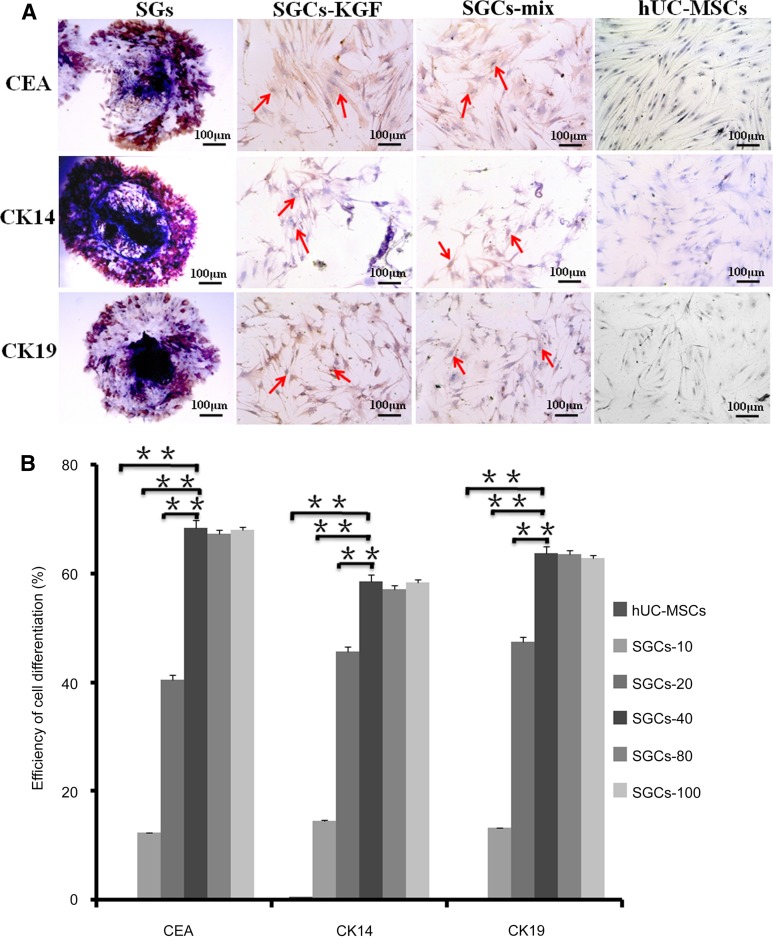Figure 3.
Phenotypes of natural sweat glands (SGs), differentiated SGCs, and hUC-MSCs. Three SG biomarkers—CEA, CK14, and CK19—were examined in natural SGs (positive control), differentiated SGCs (SGCs-KGF and SGCs-mix) and hUC-MSCs (negative control), using immunocytochemical analysis. Natural SGs highly expressed all three biomarkers. Differentiated SGCs (SGCs-KGF differentiated in the induction medium-KGF and SGCs-mix differentiated in the induction medium-mix) were positive for all three SG biomarkers. (A): As expected, hUC-MSCs were negative for all three SG biomarkers. To evaluate the efficiency of cell differentiation, hUC-MScs were cultured for 3 weeks in the induction medium-KGF with a range of recombinant human KGF (rhKGF) concentrations (0, 10, 20, 40, 80, 100 ng/ml) and were examined by flow cytometry analysis with the 3 SG biomarkers. Undifferentiated hUC-MSCs were used as negative control. (B): The results indicated induction medium-KGF containing a concentration of 40 ng/ml of rhKGF or higher could induce approximately 60% hUC-MSC differentiation to SGCs. Differentiation efficiencies in the induction medium-KGF containing a concentration of 40 ng/ml rhKGF or higher were significantly higher than other groups (∗∗, p < .01). Therefore, the optimal concentration of rhKGF in the induction medium-KGF was 40 ng/ml of rhKGF for hUC-MSC differentiation. n = 3 per group. Scale bars = 100 μm. Abbreviations: CEA, carcinoembryonic antigen; hUC-MSC, mesenchymal stem cell derived from human umbilical cord Wharton’s jelly; KGF, keratinocyte growth factor; SGC, sweat gland-like cell; SGCs-10 (20, 40, 80, 100), sweat gland-like cells, 10 ng/ml.

